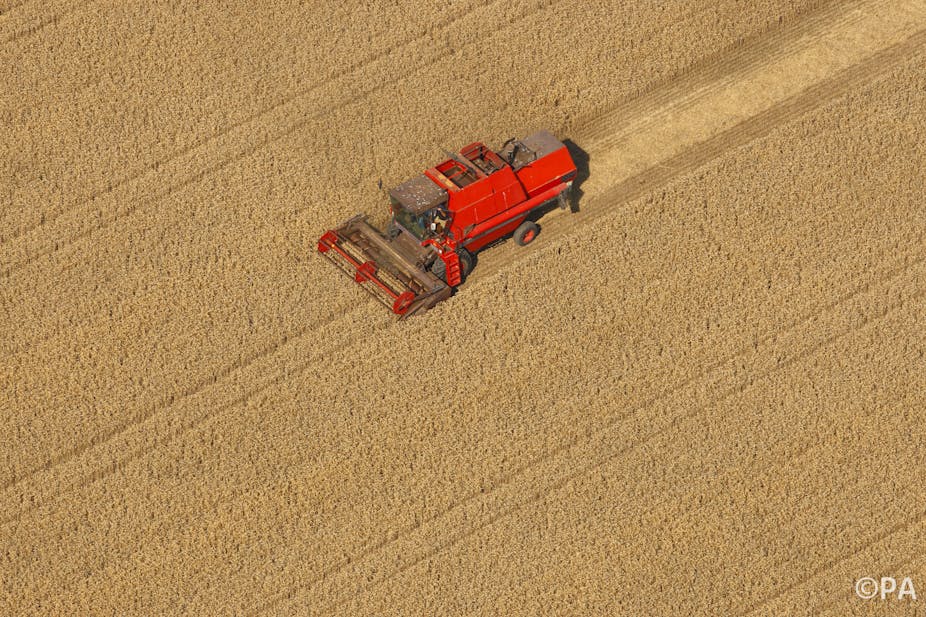Reforming the European Union’s Common Agricultural Policy has never been easy, and that’s hardly surprising. It’s well established that when interests are concentrated together, such as those of farmers and the agricultural industries, they tend to win out over more diffuse interest groups - like taxpayers in general.
For many farmers the Single Farm Payment (SFP) subsidy granted to them under the Common Agricultural Policy (CAP) is the difference between turning a profit for the year or recording a loss. No wonder then, that they have an incentive to band together to lobby to keep the status quo, and their payments.
They are backed by other beneficiaries of a successful farming sector, such as manufacturers of machinery, agrochemicals, or veterinary medicines. Further support comes from processing firms that themselves also receive substantial subsidies from the CAP, such as sugar processors Tate & Lyle. And at the highest level, some EU member state governments are strong supporters of the CAP - notably Ireland and France.
The latest reform agreed last week will not come into force until 2015. It has in many respects been driven by the need to curb the amount of money member states contribute towards subsidies - €58 billion in total last year. This is hardly surprising considering the current drive for austerity, and it would free up resources for other EU objectives, such as promoting research and development.
In that respect, the reform has been a modest success - given the strength of resistance to any reduction at all. Although the final outcome is still unknown, UK farmers are likely to experience a loss from their subsidy of around 10% in real terms. The exact amount would depend on fluctuations of the pound against the euro.
For the first time the CAP will account for less than 40% of the EU budget. For many, that is still far too high a percentage, given the small contribution of agriculture to the Eurozone’s GDP. Even so it’s a considerable improvement from the 1970s, when the figure was more than 70%. The funding is also delivered in a less market-distorting way than in the days when it was based on buying up surplus produce - only to create the butter mountains and wine lakes in storage that have gone down in history.
Nevertheless, there has been considerable disappointment with the extent of the reform. Originally, this year’s reform process was to be about efforts to “green” the CAP, given the potentially harmful effects of intensive agriculture on the environment. But proposals that the CAP also attend to matters of climate change were dropped at an early stage - despite the fact that agriculture and the food chain is a major contributor greenhouse gas emissions.
What remains is a requirement for “ecological focus areas” such as buffer strips - un-farmed areas of vegetation used to help soil and nutrient retention. Requirements for crop diversity have been set to avoid the degrading effects of crop monocultures, and to protect permanent grasslands. Farmers will have to meet these requirements in order to receive their subsidies. However, each member state can implement these greening proposals in a way that suits national circumstances.
The National Trust, among others, criticised the deal as a backward step, commenting that it “makes it harder to reward farmers and land managers for the provision of fundamental public goods”. The ability to “lay the foundations of a sustainable farming industry – healthy productive soils, clean water, cultural landscapes and public access” it added, had been “seriously undermined.”
Particular criticism has been directed at the decision to drop the cap on the amount of subsidy that could be received by larger, and therefore richer, landowners. This proposal was strongly opposed by Britain and Germany who, along with the Czech Republic, would see a considerable drop in their overall income from the CAP as they have more large farms.
This really takes us to the issue of what the CAP is for - an issue that has never really been resolved. The original objectives embodied in the Treaty of Rome were to boost productivity, increase farm incomes, stabilise markets, maintain food security, and ensure reasonable consumer prices. Contradictory, declared without an order of preference, and never been formally revised despite all the changes that have taken place in agriculture in the years since.
One view is that the CAP is a form of social subsidy for smaller, more marginal farmers, albeit one delivered in a rather inefficient way, that allows them to stay on the land. Another view is that it’s a means of allowing EU farmers to compete globally, in which case large farms, more economically efficient farms are required, which often have better records on environmental protection and animal welfare too.
So instead of tawdry scenes of wrangling over subsidies when the policy reform process comes around every ten years, politicians should be brave enough to decide what the CAP is supposed to achieve, or if it should exist at all.

